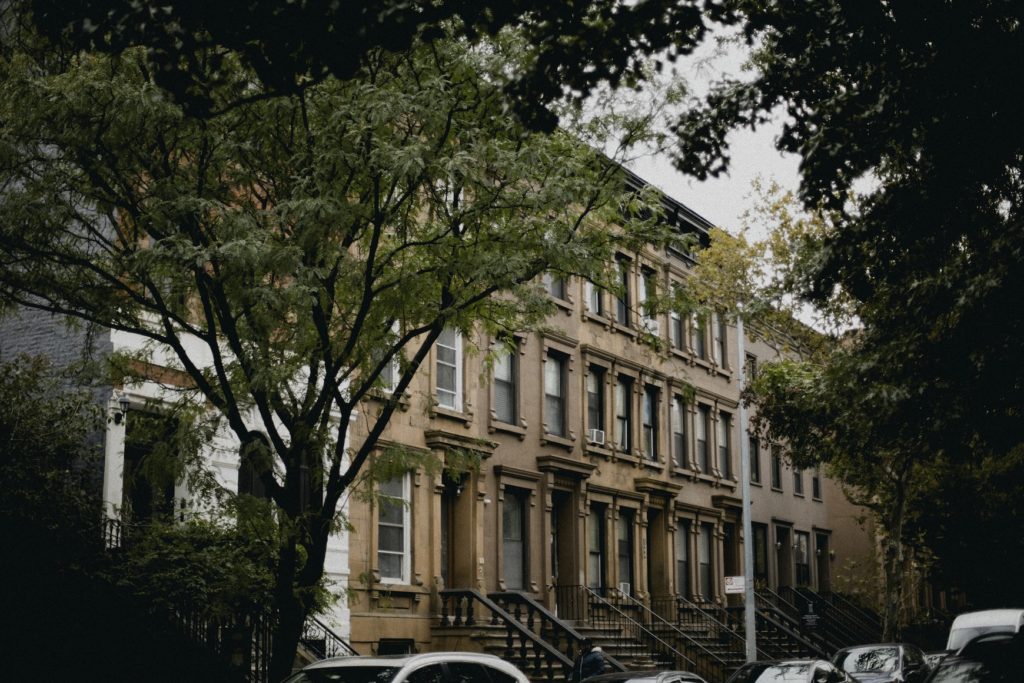The tell-tale signs are there: standing water in the corners, a musty smell. If your cellar isn’t waterproof, you may face these symptoms every time it rains or snows in New York City. A damp, leaky cellar is the last thing you want to deal with on a cold, winter day. But fortunately, you can pre-empt such a scenario by waterproofing it now.
 What’s the process for making a leaky cellar waterproof? Honestly, it can be difficult to pinpoint the source of water, especially in the city’s older buildings. But here’s the standard process for finding the problem and fixing it.
What’s the process for making a leaky cellar waterproof? Honestly, it can be difficult to pinpoint the source of water, especially in the city’s older buildings. But here’s the standard process for finding the problem and fixing it.
Redirect the Water Flow for a Waterproof Cellar
One of the first steps toward a waterproof cellar is to make sure the water goes where you want it to (instead of where it’s currently going). One common problem is that water pools in the backyard too close to the house.
A simple solution to this problem is to regrade your landscaping so the water flows away from the building. Another possibility is to add a drain that connects to your sewer line. This drain’s job is to flush water out of the backyard so it can’t flow down to your cellar.
It doesn’t make sense to start waterproofing until you’ve made sure water is redirected away from the house. But if you’ve already taken care of this step, it’s time to waterproof.
Address the Access Hatch
One of the most common places for water to enter cellars is the front or rear access hatch. The hatch covers may be made of plywood and roofing material, and sadly, this configuration doesn’t do the best job.
Instead, consider installing a steel hatch door. When cemented into the walls, steel hatch doors are water tight. If you currently have a leaky steel door, check the corners. Over time, concrete deteriorates, and the area might need a fresh patch.
Seal the Foundation Walls
Leaks in foundation walls usually appear in the back of a house, though they sometimes show up in the front as well. The reason leaks show up in the back is because side walls are usually shared with other houses, and the front wall usually has cement abutting it, which prevents water from seeping to the foundation. The back wall, however, is susceptible to all the water that pools in the backyard.
As your home settles, cracks form, and the mortar in the joints loosens and can even open up. This is a perfect opportunity for water to enter and make its way into your cellar.
You may also want to check penetrations of the foundation wall. For example, the water main, sewer pipe, and electrical wires all come through the wall, and water could conceivably run through any gaps.
If you notice wet streaks on the foundation walls or water pooling on the floor, you probably have cracks to address. Solutions to this problem include repointing the mortar and sealing up the openings with hydraulic cement. The process may require some trial and error to fix every last problem.
Finally, if your cellar is leaking on the back wall, you could excavate the wall all the way to the bottom of the foundation and apply a waterproof barrier or sealer to the outside of the wall. This seal typically prevents most water from penetrating the foundation.
Replace the Slab
In some cases, the slab may be the culprit. Some homes have a rat slab, which is a very thin layer of concrete poured directly over a dirt floor, and moisture often finds its way through it. Pouring a new slab will probably waterproof the cellar and keep your home more comfortable.
Stay Prepared with a Waterproof Cellar
Because your cellar is subterranean, it’s always vulnerable to settling and seepage. Even if you’re not seeing drips and puddles, the air may feel uncomfortably humid down there. To address this issue, you might consider installing a dehumidifier. Also, make sure all of the building materials you use in the cellar are mold and mildew resistant. And finally, you can be prepared by having a sump pump installed that can remove any water that finds its way in.
For more information, or to have one of our cellar experts out for an inspection, get in touch with us at Z. Abedin Construction. Your unique cellar may require a combination of methods. We have the expertise and tools to help. Talk soon!